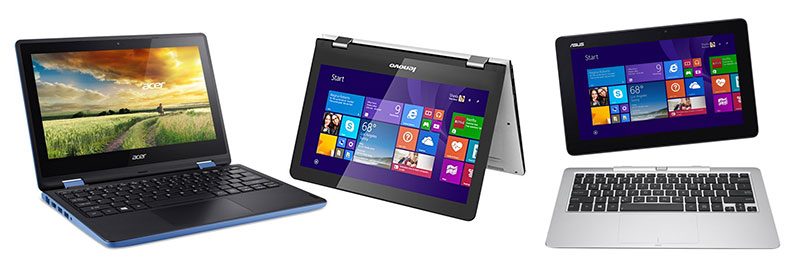Laptop Buying Guide for Students To Enhance Learning
How would you like to learn about laptop buying guide to avoid buying the wrong laptop for your needs?
Heading off to secondary school or university without a decent laptop is like refusing to use pencil and paper. It puts a ceiling how much students can learn instantly, what lengths they can go and just how many lifelong talents they can acquire. But don’t just buy whatever is available; you will need the right laptop for your unique needs.

Whether you’re a students yourself and/or are shopping on behalf of other students, I’ve compiled eight essential tips about laptop buying guide to enable you decide on the best student laptop to improve learning.
Laptop Buying Guide To Enhance Learning
1. Go for a lightweight size
The main point of shopping for students laptop is the fact that you can carry these devices to class. Unless you’re an engineering student who requires a CAD workstation, choose a laptop that weighs under 4 pounds and comes with an 11- to 14-inch display.

A younger student can manage with a laptop that comes with an 11-inch screen, but typing space and screen visibility are a problem at that size often. Thirteen inches is the sweet spot between usability and portability, although students in the creative arts or engineering may put more value on the bigger screen.
2. Pick an improved design

When you have more to invest, look for laptops created from aluminum, magnesium alloy or carbon fiber, for sturdiness you can depend on. Also, look to see if the manufacturer has made any toughness claims. Some learning student laptops, like the Asus C202, are created to survive drops from a specific height specifically. Many business laptops are created to pass MIL-SPEC 810G toughness tests, and so they work just as well in the classroom just as the boardroom. A spill-resistant keyboard is a huge plus.
3. Get specs for the long-term
You want something that’s not going to be obsolete before graduation, so keep an optical eye on the main element internal components.
Screen: Most budget and many mainstream laptops have low-res, 1366 x 768 displays that are not very sharp and can’t fit a lot of text on the screen, making them poor selections for writing papers or doing research. Unless you’re buying an extremely inexpensive laptop or one with an 11-inch screen, obtaining a display that’s at least 1920 x 1080 (1080p) resolution should be considered a priority.
You can increase though, with resolutions of 2560 x 1440 (QHD) or 3840 x 2160 (UHD). These are great for video and photography students who need to view high-res source material, but those display specs enhance the price and subtract from the battery life. Touch screens add functionality to your laptop, nevertheless they consume a huge amount of power, shortening your battery life by 10 to twenty-five percent, so do not get one if you don’t actually need it.
CPU: If you need a system that delivers sound performance for today and tomorrow, get an Intel Core-i55 or Main i7 CPU. Make certain the processor chip model amount has a 6000 in it (ex lover; Core i5-6200U), which means you have the latest Intel 6th Era (aka Skylake) chip. If you are with limited funds, a Primary i3, Celeron or pentium CPU will suffice for light output work, and Intel’s Central M processor gives good performance in slim-and-light designs.
Ram memory: Unless you’re buying an inexpensive laptop for a more radiant child, 4GB is the smallest amount of Ram memory you ought to have in a laptop, and 8GB is ideal. Which will run all you need without dragging you down or interfering with multitasking.
Hard Drive: Getting an SSD (solid-state drive) rather than mechanized hard drive has a far more significant influence on performance than buying a fast processor. Because SSDs haven’t any moving parts, they run 3 to 4 times faster than typical 5,400 rpm or 7,200 rpm hard disks. Which means faster application starts, start times and activity turning, along with far better responsiveness. SSDs do cost far more while offering less storage, if you have a total great deal of advertising data files, you may want to store some in the cloud or by using an external drive.
Wi-Fi: Ensure you get a laptop with 802.11ac Wi-Fi standard, than the more aged 802 somewhat.11n.
Jacks: USB Type-C plug-ins will be the future, but regular USB Type-A slots are the present. When you can get a laptop with a variety of both, that’s ideal. Make an effort to get a laptop with multiple USB jacks definitely, so you won’t need to carry a great deal of dongles along.
4. Receive the right OS
windows10

Consider the operating-system. If you’re going to college, talk with the university or college about software requirements. Sometimes classes will require you to truly have a specific kind of software or operating-system to ensure conformity with future workloads. Windows 10 is typically the most popular operating system & most versatile; Microsoft’s program has an incredible number of applications, helps both touch-friendly tablet method and keyboard-friendly desktop function and will be offering the helpful Cortana digital helper.
mission control
Recently, Apple declared that Operating-system X will now be known as macOS and this Operating-system X users will be obtaining a free upgrade sometime this show up. New features in macOS make it even better to send things backwards and forwards between your Apple PC and iPhone, while also delivering Apple’s digital helper, Siri, to desktops.
5. Search for 8 hours or even more of battery life
Don’t tether yourself ultimately to an outlet. Get yourself a laptop that offers quality battery pack life, to check out systems with optional prolonged electric batteries for the longest run times. Generally, you’re better off buying a laptop using more than 8 hours of run times, regardless of the price. The most common for ultraportable laptops is 7 hours, 55 minutes, predicated on the Laptop Mag Battery Test (continuous web surfing over Wi-Fi). However, some models, including the Lenovo ThinkPad T460, can go on for so long as 17 hours, with the right electric battery.
Get your Lenovo ThinkPad T460 Now!
6. Check the laptop keyboard and touchpad
The keypad should be springy and comfortable, not mushy. Search for profound travel and strong responses. The touchpad is also important; you’ll want to be sure the responsiveness is smooth which multitouch gestures like pinch-to-zoom are appropriately reactive. Business notebook computers — such as Lenovo ThinkPads, Dell Latitudes and Horsepower EliteBooks — offer among the better keyboards and touchpads.
7. Look at a 2-in-1

Convertible laptops also known as 2-in-1s can handle a lot of work while giving you the overall flexibility of a tablet. You can find two varieties of hybrids: laptops with lids that flip back 360 degrees, and detachable tablets. Amongst bend-back 2-in-1s, the Lenovo Pilates 900 and Lenovo yoga 300 are well known, thanks they’re light-weight design, beautiful display and solid power life. Well known detachable, the top Pro 4 begins at $899 (another $129 for the key pad cover) and will be offering a great design, vivid display screen and powerful performance. However, if you are looking for something cheaper, Acer’s Move Alpha 12 offers an same design and performance, though somewhat less battery pack life, for $669 (keyboard included).
The Main Points:
In summary, here are our quick laptop buying guide, plus all the details you need to know. You can order for yourself a right laptop at the link provided at the end of this post.
- Go portable: 11- to 14-inch screen size, less than 4 pounds
- Durability is king: Spill-resistant keyboards, MIL-SPEC tested are pluses.
- Recommended specs: Intel Core m or Core i CPU, 8GB of RAM, 256GB SSD, 802.11ac Wi-Fi. Chromebooks can have less.
- OS Options: Chromebooks are good for kids. Windows is best for productivity, but OS X is for art/design students.
- Battery life: 8+ hours is ideal; 6+ hours is required.
- Keyboard and touchpad: Look for responsive keys with deep travel.
- Consider a 2-in-1: Great for drawing, pen-based note taking, working while standing up.
Order Now for your student laptop at an affordable price at Konga or Amazon
Did you find this post on “Laptop Buying Guide To Enhance Learning” helpful? Please a comment below for questions and contributions and don’t forget to share.





